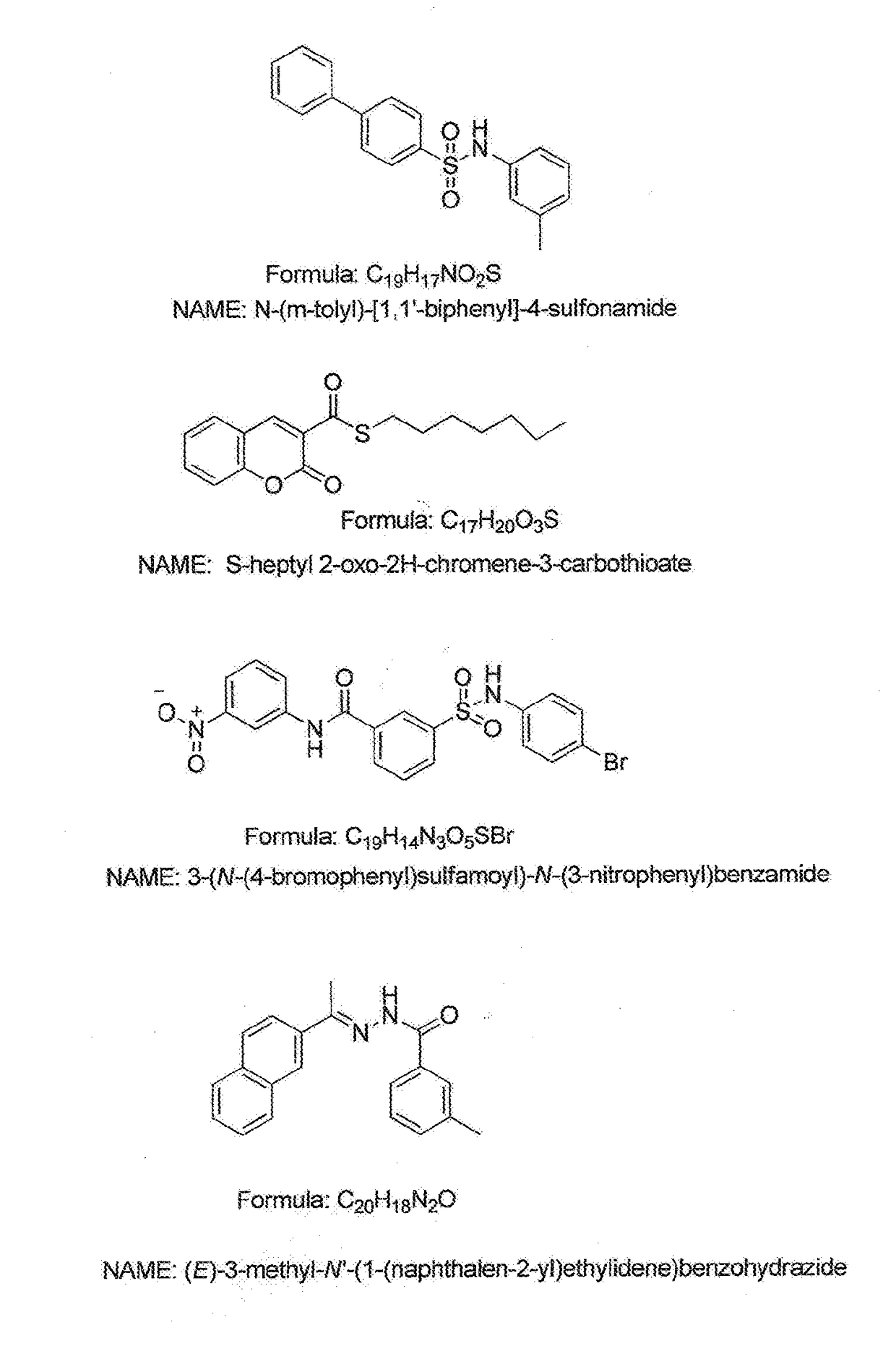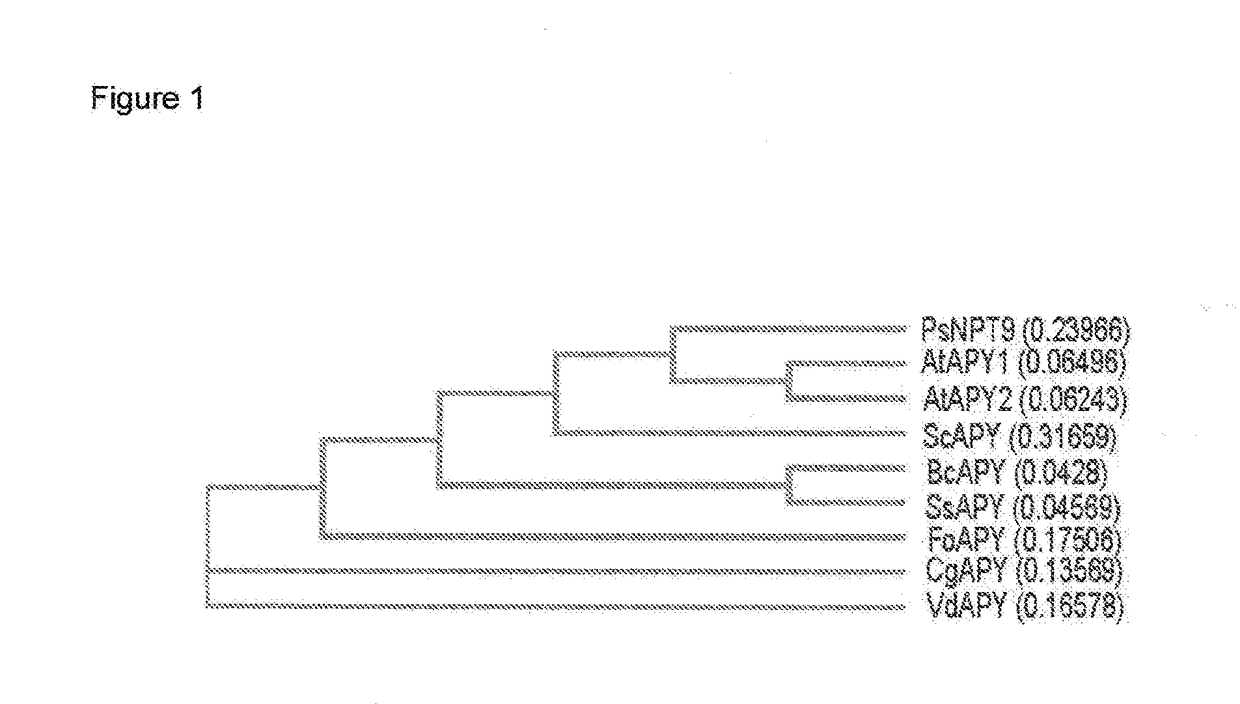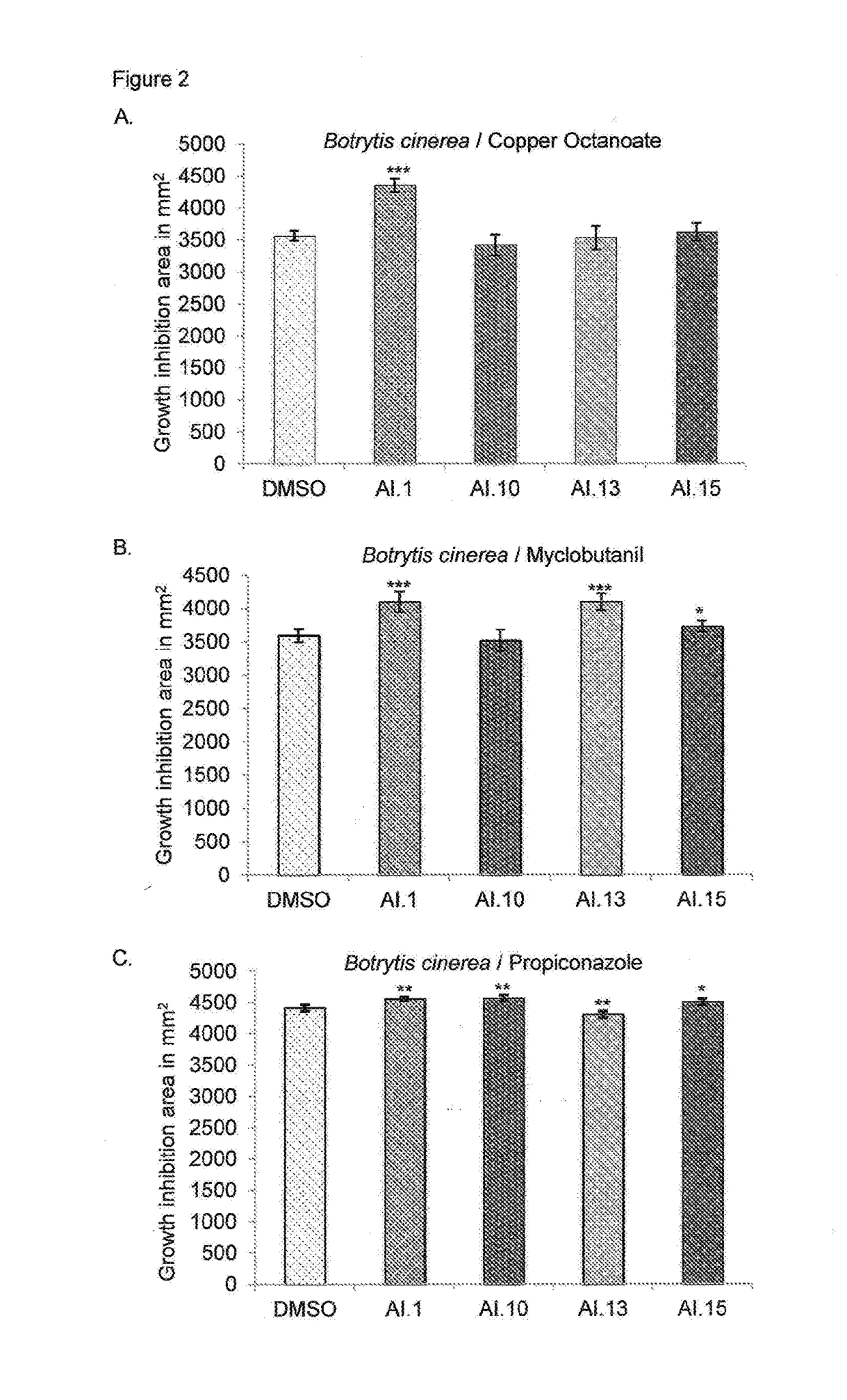Fungicide enhancers effective for treating plants infected with fungal pathogens
a technology of fungicides and enhancers, which is applied in the field of enhancing the efficacy of fungicides, can solve the problems of increasing the sensitivity of fungi to these toxins, and the ability of fungi to quickly detoxify and eliminate toxins
- Summary
- Abstract
- Description
- Claims
- Application Information
AI Technical Summary
Benefits of technology
Problems solved by technology
Method used
Image
Examples
example 1
Botrytis cinerea
[0056]Pathogenic fungus B. cinerea was grown in the presence of fungicides (Copper octanoate, Myclobutanil and Propiconazole) supplemented with apyrase inhibitors AI.1, AI.10, AI.13 and AI. 15. Copper octanoate combined with inhibitor AI.1 had a significantly greater inhibitory effect on the growth of B. cinerea (22%) as compared to copper octanoate alone (FIG. 2A). Also myclobutanil combined with inhibitors AI.1, AI.13 and AI.15, had a significantly greater inhibitory effect on the growth of B. cinerea compared to that of myclobutanil alone (FIG. 2B). The fungicide propiconazole combined with inhibitors AI.1, AI.10 and AI.15 had a greater inhibitory effect on the growth of B. cinerea compared to propiconazole alone (FIG. 2C).
example 2
Colletotrichum graminicola
[0057]Pathogenic fungus C. graminicola was grown in the presence of fungicides (copper octanoate, myclobutanil and propiconazole) supplemented with apyrase inhibitors AI.1, AI.10, AI.13 and AI. 15. Copper octanoate combined with inhibitors AI.1 and AI.13 had a significantly greater inhibitory effect on the growth of C. graminicola compared to that of copper octanoate alone (FIG. 3A). In the presence of inhibitors AI.1, AI.10, AI.13 and AI. 15, fungicide myclobutanil had a significantly greater inhibitory effect on the growth of C. graminicola compared to that of myclobutanil alone (FIG. 3B). None of the four inhibitors along with propiconazole were able to inhibit the growth of fungus more significantly than the propiconazole used alone (FIG. 3C).
example 3
Fusarium oxysporum f. sp cubense
[0058]Pathogenic fungus F. oxysporum was grown in the presence of fungicides (copper octanoate, myclobutanil and propiconazole) supplemented with apyrase inhibitors AI.1, AI.10, AI.13 and AI.15. Copper octanoate combined with inhibitors Al.1 and AI.13 had a significantly greater inhibitory effect on the growth of F. oxysporum than copper octanoate alone (FIG. 4A). Fungicide myclobutanil in the presence of inhibitor AI.10 had a significantly greater inhibitory effect on the growth of F. oxysporum than myclobutanil alone (FIG. 4B). In the presence of AI.10 fungicide propiconazole had a significantly greater inhibitory effect on the growth of F. oxysporum than propiconazole alone (FIG. 4C).
PUM
 Login to View More
Login to View More Abstract
Description
Claims
Application Information
 Login to View More
Login to View More - R&D
- Intellectual Property
- Life Sciences
- Materials
- Tech Scout
- Unparalleled Data Quality
- Higher Quality Content
- 60% Fewer Hallucinations
Browse by: Latest US Patents, China's latest patents, Technical Efficacy Thesaurus, Application Domain, Technology Topic, Popular Technical Reports.
© 2025 PatSnap. All rights reserved.Legal|Privacy policy|Modern Slavery Act Transparency Statement|Sitemap|About US| Contact US: help@patsnap.com



